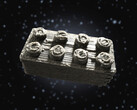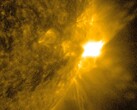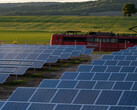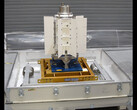The heliosphere is a protective layer of plasma that is emitted in the form of solar winds and surrounds the entire solar system all the way to Pluto with the sun as its producer and center.
Basically, it has the same functions as our atmosphere. Instead of protecting us from solar storms and flying rocks, the heliosphere protects us from influences lurking beyond the borders of our solar system.
And it is precisely this protective shield that could have failed around 2 million years ago, i.e. around the time the ice ages began. This is suggested by a study in Nature Astronomy which looked at the movement of the sun in the Milky Way and the universe around us.
A "cosmic bubble", an area with an unusually high density of hydrogen atoms floating freely in space, is held responsible for this. When the solar system passed through this area of the cosmos as it rotated around the center of the Milky Way, the heliosphere was prevented from unfolding as usual.
According to calculations of the cloud's density and influence on the sun's plasma, the heliosphere shrank to a tiny fraction. It was then too small to protect the Earth.
Indirect evidence - and there is hardly any other in geology - is provided by increased concentrations of plutonium-244 and iron-60, which are found in correspondingly old layers of rock. This increased occurrence of isotopes can basically only be explained by a strong increase in cosmic radiation.
Only this would have enough energy to produce such isotopes. In addition, the influence on the protective atmosphere would also have been extreme, which could ultimately explain the cooling and the subsequent ice ages.
How long this phase lasted without a heliosphere is currently impossible to say. Moreover, the next encounter with a dark cloud of hydrogen is probably only a matter of time. Fortunately, in astronomy, that can easily be a few million years.














